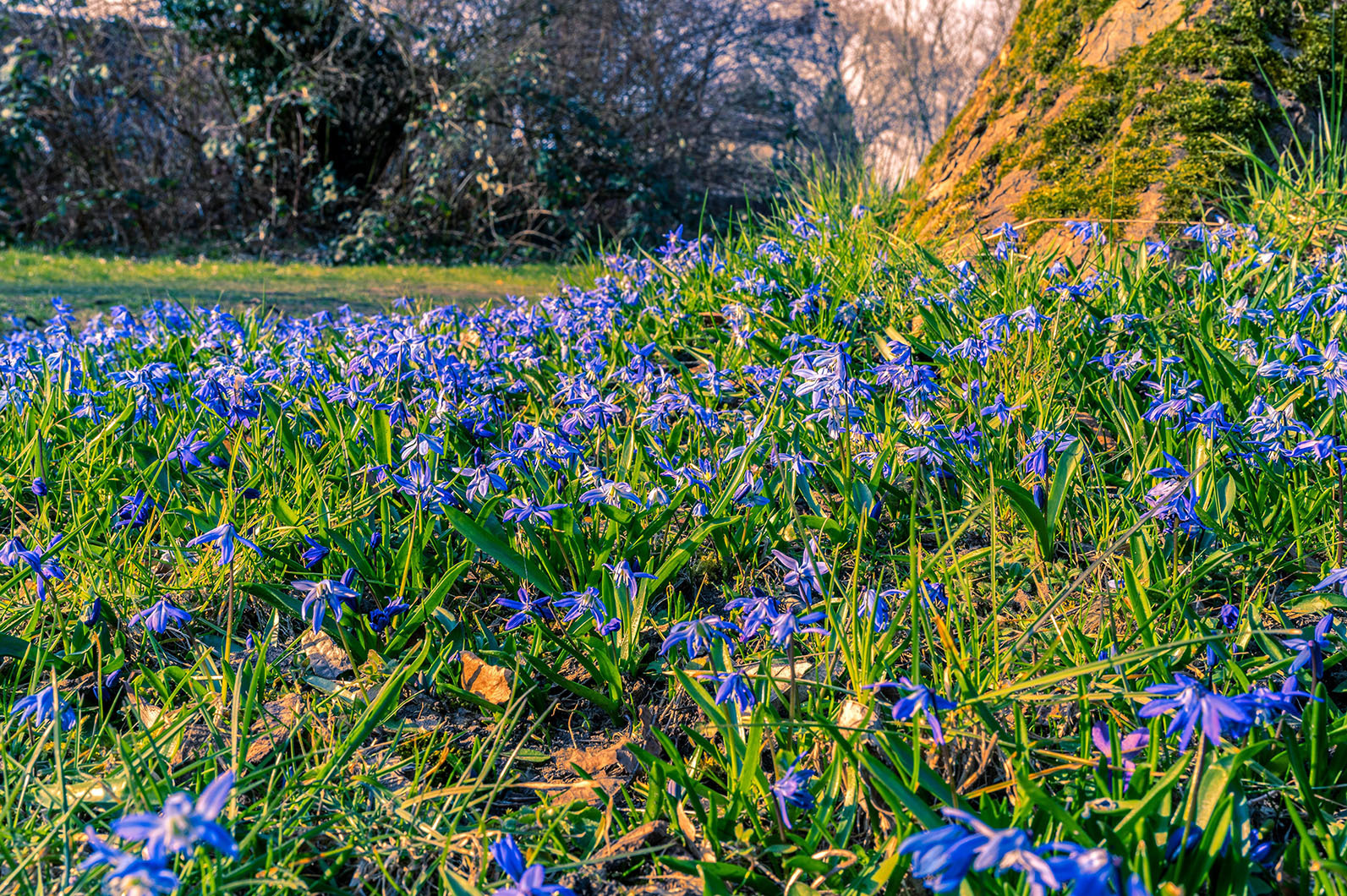With the arrival of spring comes the awakening of nature throughout Europe – and for a short time, it’s a spectacular sight. In these cities, you’ll be able to see this blossoming natural phenomenon in all its splendour:
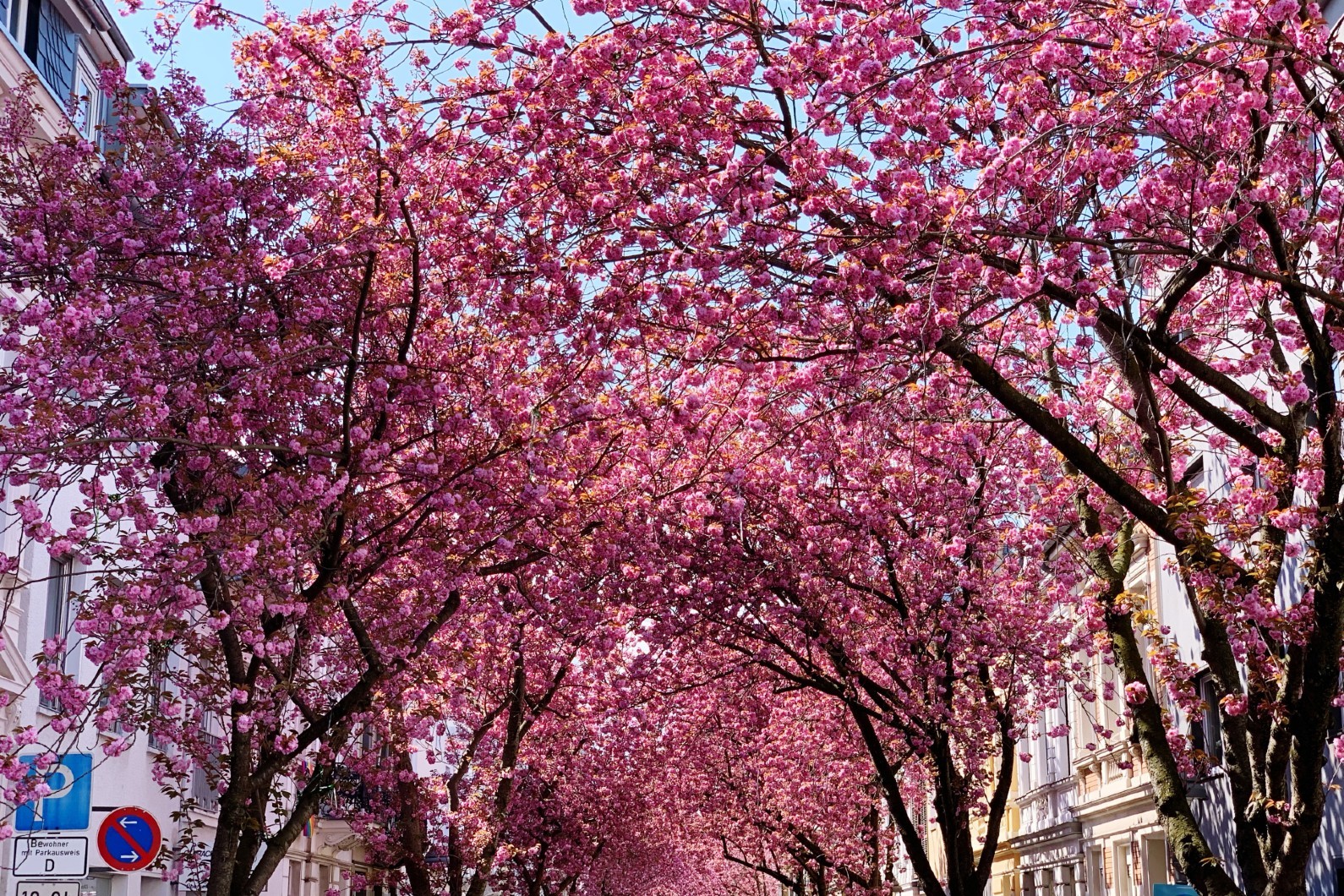
For a few weeks a year, the sky above the old town in Bonn between Heerstraße and Breite Straße is awash with pink petals. The Japanese cherry blossom trees responsible for this were planted in the 1980s as part of an improvement campaign. Because different varieties were planted, the trees bloom at different times, not all at once. Maxstraße is usually the first to turn pink, with the Japanese cherry trees on Heerstraße closing out the season.
Blooming marvellous from early April to May
How to get there: From our Motel One Bonn-Beethoven and Bonn main train station, it’s less than a 10-minute walk to the blossoming old town. If you’re using public transport, the best stop is Stadthaus on Berliner Platz.
A classic tune from the 1950s bears witness to the wonder of spring in this Viennese park: ‘In the Prater, the trees bloom again.’ And rightly so: in this green oasis in the heart of Vienna, every year around 2,500 chestnut trees burst into flower – in two colours. Pink chestnut trees are in bud on Rotundenallee, while Kaiser- and Hauptallee mesmerise visitors with 4.5 kilometres of white chestnut blossoms. There are now also bee hives along this stretch of chestnut trees. The insects gather pollen from the trees to make Vienna Prater honey.
Blooming marvellous from April to June
How to get there: From the Motel One Vienna-Prater, cross the road and walk through the amusement park until you reach Hauptallee. You can stroll along this road to Kaiserallee or turn onto Rotundenallee at the Liliputbahn light railway. Using public transport, you can take tram line 1 to the Prater Hauptallee station.
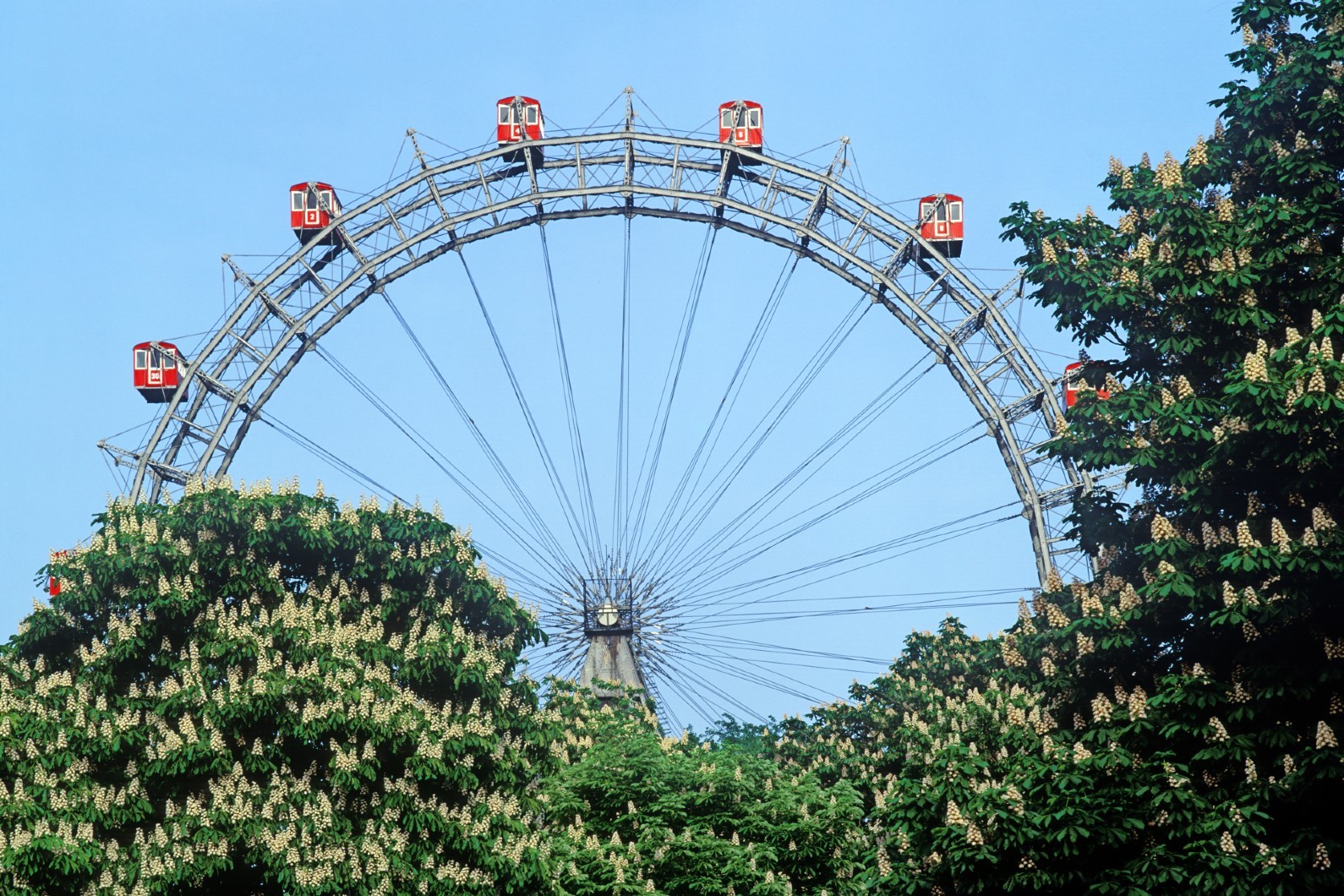
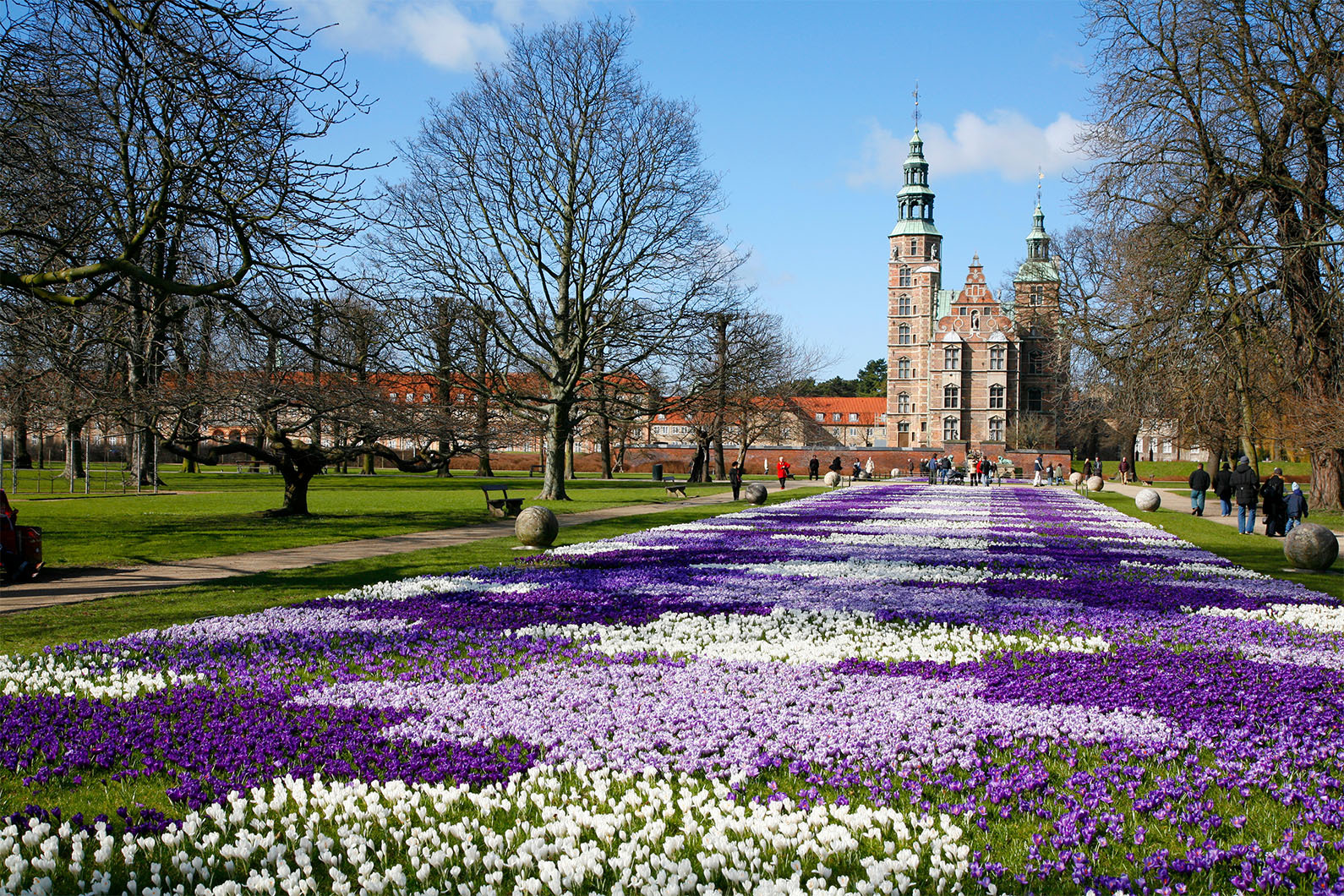
While the plants in the rest of the Danish capital are still in hibernation, a bright purple carpet of flowers blooms in the King’s Garden in front of Rosenborg Castle. In 11 rows 160 metres long, purple, white and striped crocuses sprout from the winter earth to create the perfect backdrop for the Renaissance castle. It’s also worth turning your gaze towards the other end of the park, where the flowering meadow forms a suitable contrast to the colourful old buildings. The garden was first planted in 1606. The crocuses were added in the middle of the last century, and have been blooming every year since then.
Blooming marvellous from mid-March to early April
Where exactly? From the Motel One Copenhagen, it’s just a short walk to the National Museum of Denmark, where you can get tram 23 to Georg Brandes Plads or bus 5C to Noerreport St. But it’s even prettier to make the 20-minute walk through the city centre past the Rundetaarn – one of the most popular sights in the city.
Did you know that the magnolia was named after French botanist Pierre Magnol? Where better to marvel at these magnificent trees than in Paris! The magnolias bloom the most beautifully in the Champ de Mars by the Eiffel Tower. When the afternoon sun is behind the Eiffel Tower, it illuminates the steel structure and the flowers gleam with a particularly beautiful light. The large blooms can also be seen in many other parts of the city. You can sit under a canopy of spectacular blossoms near the Louvre in the Jardin du Palais Royal and the Jardin des Tuileries. Or you can take in the magnolias at the Jardin Anne Frank in the Marais, Parc de Bagatelle in the 16th arrondissement and at the Hôtel de Ville.
Blooming marvellous from March to April
How to get there: You can take the M8 metro line from the Motel One Paris to École Militaire to take in the most popular magnolia hotspot, the Champ de Mars. From there, you can walk under the Eiffel Tower to the Seine.
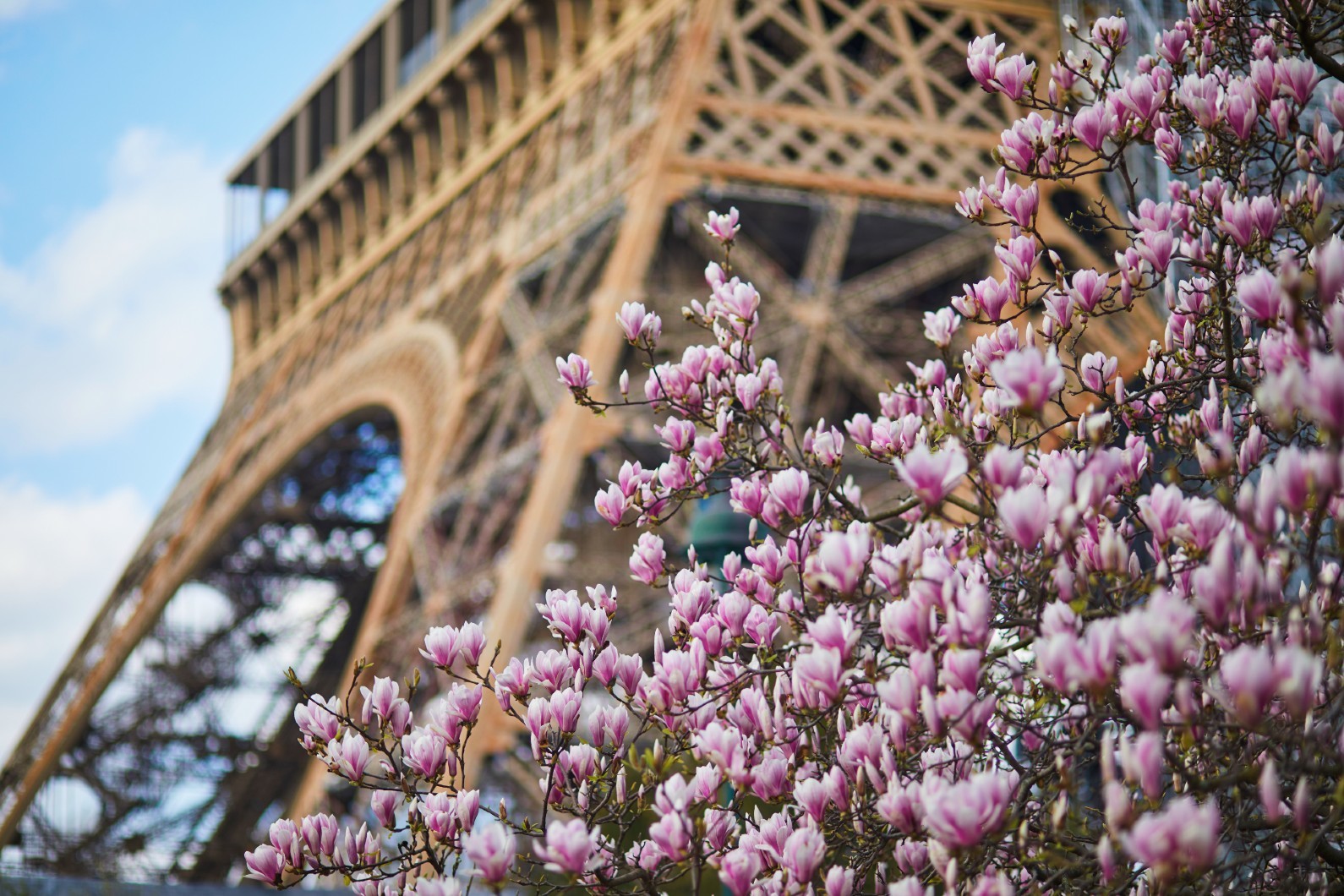
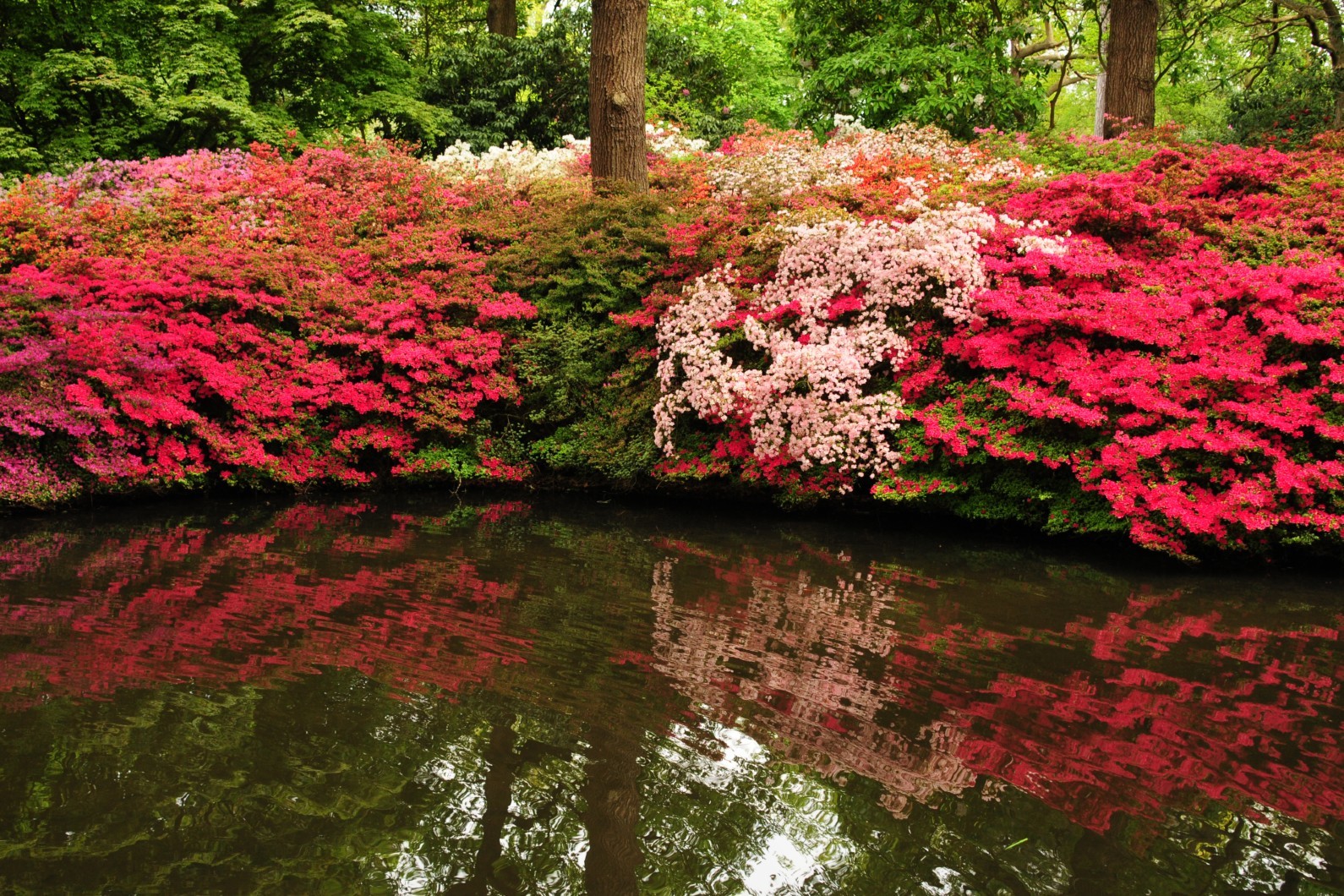
At the University of Roehampton in London, you have to pass through a sea of flowers to get to your lectures. Wisteria grows over the many wrought iron arches near Grove House to form a tunnel of flowers. The university campus adjoins Richmond Park, which is one of the most stunning gems the city has to offer. In the largest of the royal parks, flowers in all shades of pink are blooming at the same time. The Isabella Plantation is home to dozens of rhododendrons that create a captivating blossoming vista.
Blooming marvellous from April to July
How to get there: From our Motel One, you can take the District line to Putney Bridge. Get off there and take the 265 bus to the entrance to the university.
On Lindener Berg, the second-highest elevation in Hanover, a carpet of millions of small blue flowers heralds the start of spring. The Siberian squill, whose Latin name is Scilla siberica, dominates the former cemetery. In the middle of the park, surrounded by blue flowers and moss-covered trees, there is a pavilion from Hanover’s heyday, making it an especially picturesque setting. The Siberian squill flowers are hugely celebrated every year – but the dates of the Scilla Flower Festival on Lindener Berg can only be announced at short notice, as bad weather can delay flowering.
Blooming marvellous from late March to July
How to get there: Take tram 9 to Lindener Marktplatz then walk another 10 minutes up the hill. Or you can take a pleasant 40-minute stroll over the Leine, through Calenberger Neustadt and the trendy Linden-Limmer district.
